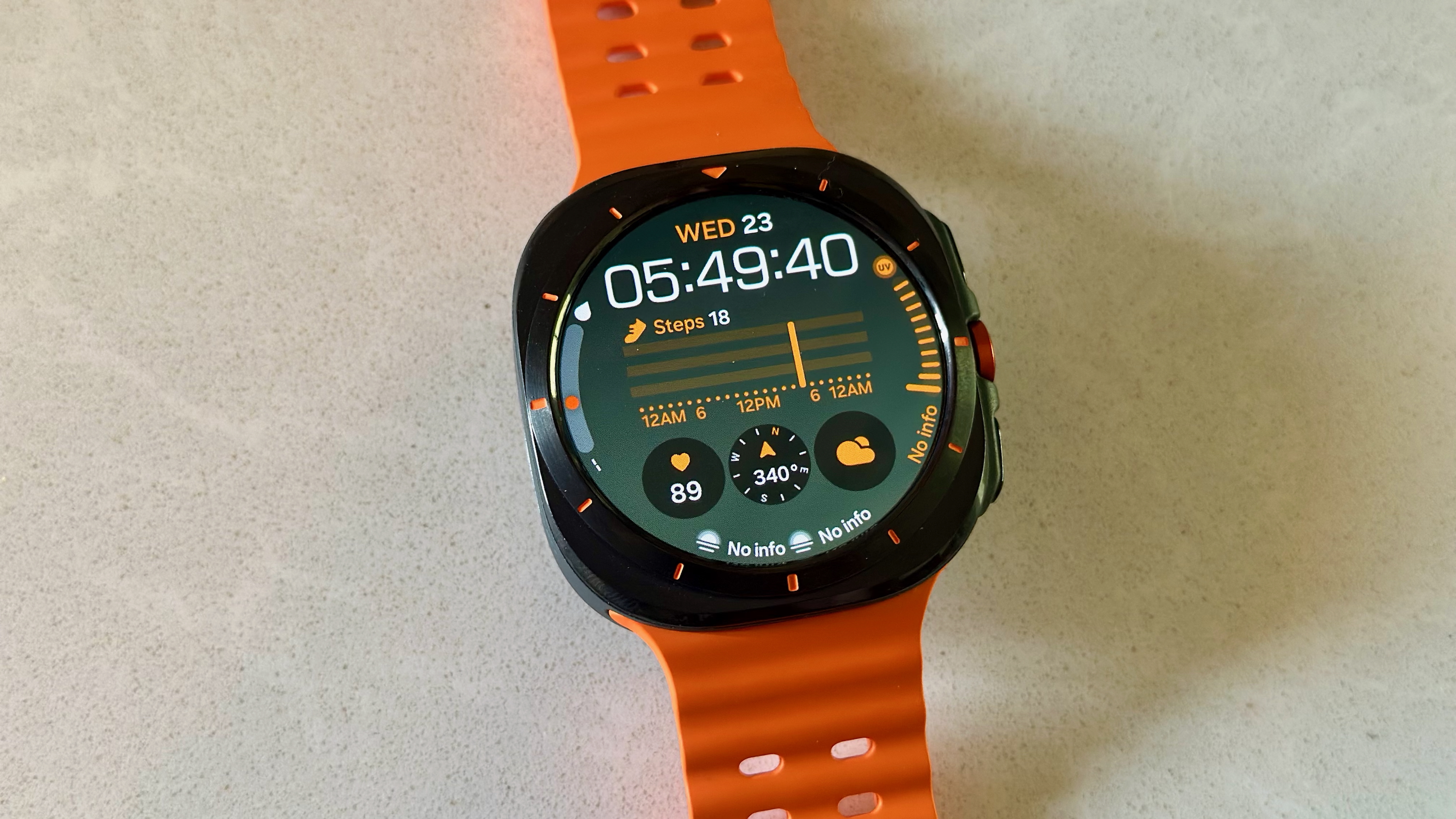I've tested dozens of wireless earbuds, and these are the pairs you should buy in 2025
Pair your Android phone with a great pair of earbuds for high-quality audio in your ears.
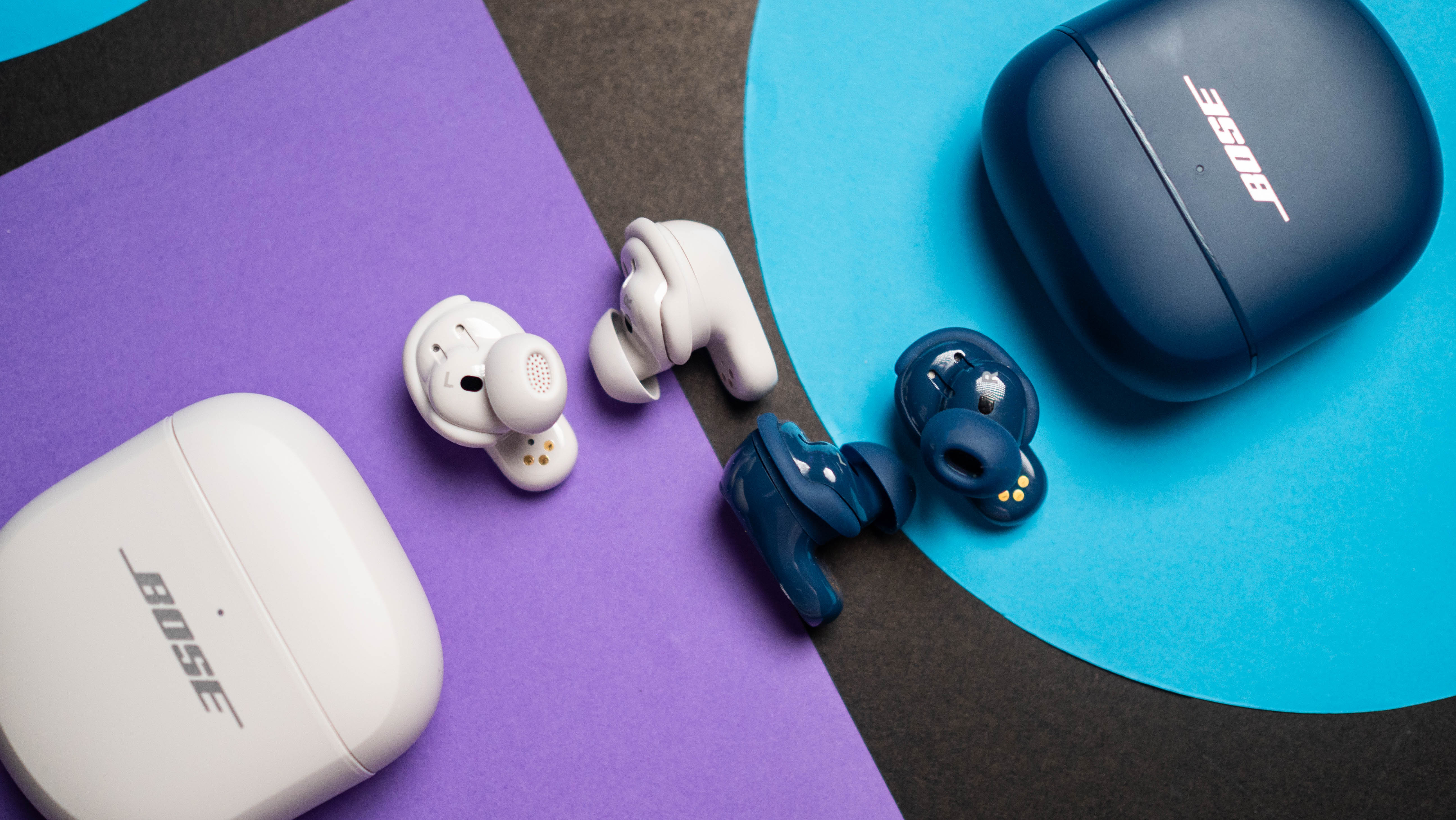
At a glance
1. Best overall
2. Best upgrade pick
3. Best budget pick
4. Best for noise cancellation
5. Best for Samsung users
6. Best for Pixel users
7. Best for workouts
8. Best for hi-res
9. Best for students
FAQ
How to choose
How we test
There are no headphone jacks on most phones anymore, therefore, the best wireless earbuds are a necessity in 2025. Earbuds are the most convenient and effective way to enjoy the audio content you want to listen to most.
There are so many great options on the market, and I get to test dozens of them throughout the year, so I can tell you which pairs stand out. Whether it's time for an upgrade or you're investing in your first pair of wireless earbuds, we have the best options in every category to pair with your Android phone.
Given the pairs on this list, take into account some key points. What do you want most in a pair of earbuds? Do you just want to listen to music? Do you need clearer phone call quality? How about podcasts or audiobooks? Great choices lie within this group, and they can cover different use cases and budgets. You just need to know where to look.
The Sony WF-1000XM5 sit at the top because of their sophisticated balance of premium specs and customization, but they're among an elite set of other options. If you're not sure whether earbuds are right for you, check out my guide to the best wireless headphones while you're here.

For 20+ years, Ted Kritsonis has been spending a lot of time testing out gadgets to help others make the best decision with their hard-earned money. When it comes down to audio devices, Ted's picks come from countless hours of listening for all the nuances that matter.
Best overall
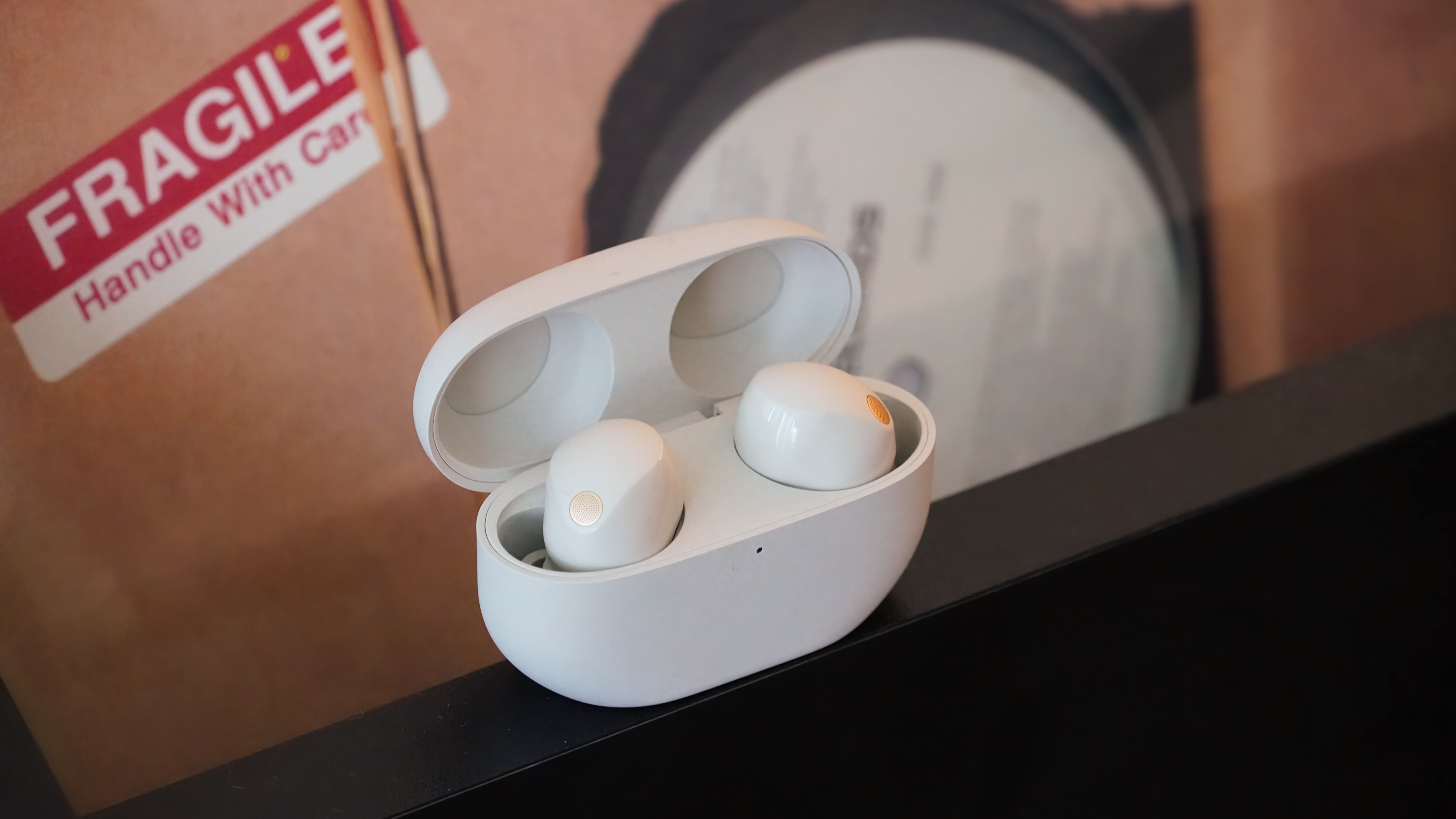
Specifications
Reasons to buy
Reasons to avoid
At this point, ANC has become a standard feature in wireless earbuds, and we found the WF-1000XM5 are world-class by comparison in our review. That was already the case with the previous Sony WF-1000XM4, with the XM5 taking it even further to set the tone for everyone else.
Sony didn't have to play too much with the existing sound profile, choosing not to skew the default soundstage to push more bass. Instead, you get something more neutral to start off, leaving you plenty of room to customize it through the equalizer settings in the Headphones Connect app. Battery life is excellent as well, with up to eight hours alone (with ANC on) and an additional 24 hours with their charging case.
Sony continues to shave the earbuds and case down, and adding foam tips does wonders for passive noise isolation. Even with that, the WF-1000XM5 have an ambient sound mode that also performs well. And then there's 360 Reality Audio for listening to content with a spatial effect. If you've got the money to spend, the Sony WF-1000XM5 earbuds are definitely worth the splurge.
Best upgrade pick

Specifications
Reasons to buy
Reasons to avoid
Bowers and Wilkins rebuilt some key aspects of the Pi8, particularly with the new 12mm Carbon Cone drivers, utilizing the same material it previously included in the company's Px8 over-ear headphones. Sound quality is superb, taking things further with support for aptX Lossless and aptX Adaptive for hi-res playback wherever you can find it. With improved ANC in the mix, there's a nice package to appreciate from a sonic perspective.
The charging case doubles as a transmitter for a nifty way to cut the cord on an airplane or similar situation. Plug the included cable into any headphone jack and you can stream audio to the earbuds. This also works really well with devices that only have USB-C ports. You can also listen to hi-res audio this way.
Battery life is okay at up to 6.5 hours per charge with ANC on, though that will drop the more you raise the volume. The case nets an extra three charges for an overall total of about 20 hours. Charge the case itself via USB-C or Qi wireless charging, including a fast-charging option where five minutes can get you up to 60 minutes of playback.
Best budget pick

Specifications
Reasons to buy
Reasons to avoid
EarFun makes earbuds at affordable price points, undercutting competitors in the same ballpark. The EarFun Air Pro 4 earbuds are no different, coming in way below what similar pairs generally sell for, which is great news for your wallet.
The value proposition here is just too good, bringing solid hi-res audio quality to anyone's ears, including excellent app support with an equalizer full of presets and custom adjustments. The stem design with curves is highly ergonomic and you get four extra ear tips in the box just in case.
Somehow, these below-$100 earbuds offer Bluetooth Auracast thanks to the latest Bluetooth 5.4, LDAC, hi-res audio, Qualcomm aptX audio, Google Fast Pair, and wireless charging. That's an insanely wide range of premium features for a bargain right there. Not to mention, battery life is superb given the Air Pro 4 earbuds last up to 52 hours in total with the ANC off and including the case. Even with ANC on, you can easily get around 48 hours or two days' worth of juice.
Best for noise cancellation
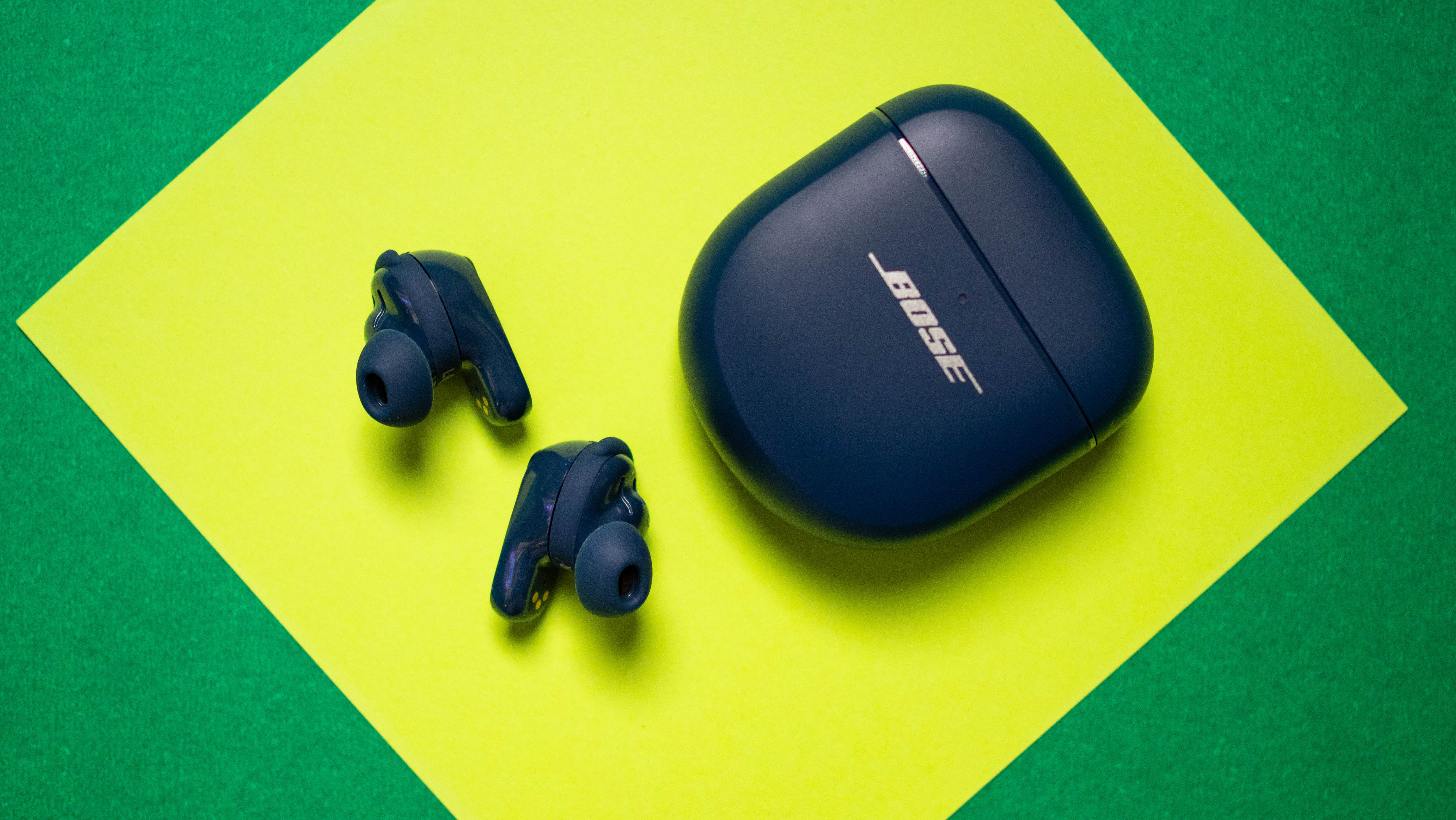
Specifications
Reasons to buy
Reasons to avoid
We described the Bose QuietComfort Earbuds II as an elite pair of earbuds when it comes to proper ANC, and the QuietComfort Ultra Earbuds take things to another level. If you like to shut out the world completely, these buds are perfect for you.
Bose also chose to make some positive changes to the sound profile, maintaining the same neutral sound profile, only this time adding more features in the Bose app to tweak them. Not only that, but adding aptX Adaptive support brings in the kind of hi-res audio support that's been sorely lacking with the company's earbuds. Battery life is decent, though it varies with volume. You're more likely to get just above five hours and an additional 18 hours with the charging case. If you want wireless charging, though, you'll have to pay extra for it.
Without question, these will produce some of the best noise cancelation you'll find on any pair of earbuds. The ambient sound mode allows you to hear the outside world, removing the need to take off your earbuds if you'd like to hear what's going on around you. Just too bad phone calls aren't clearer.
Both Amazon and Best Buy have slashed the usual going rates of these buds, bringing them down to $216 temporarily.
Best for Samsung users
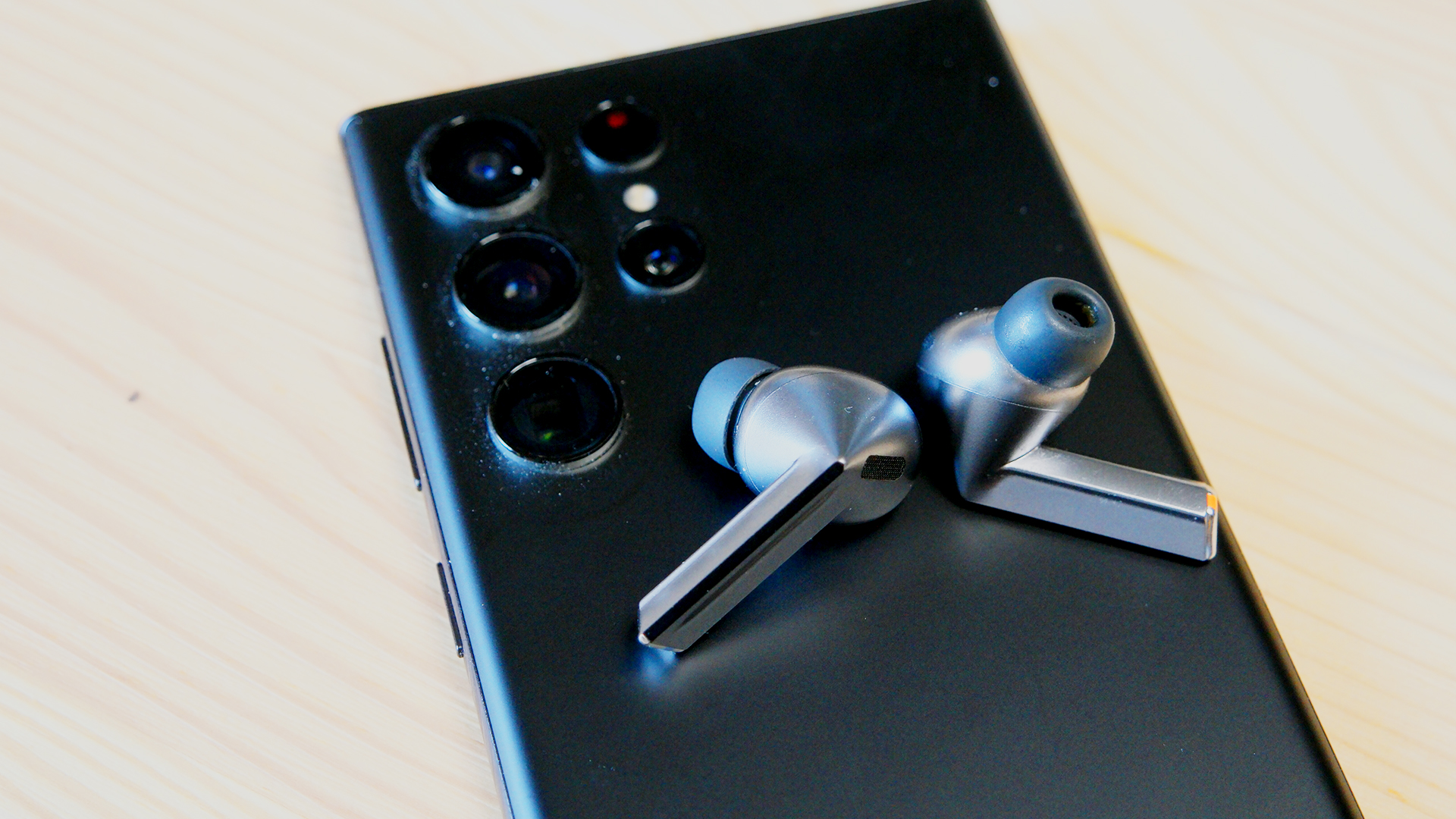
Specifications
Reasons to buy
Reasons to avoid
Samsung chose to go with a different look — at least compared to its previous earbuds — by bringing stems into the overall design. In our review of the Samsung Galaxy Buds 3 Pro, we found the newer look came with some upgrades, including with comfort and stability in spite of changing things up. And the best part is, these buds are $90 off at Amazon and Best Buy for Black Friday!
The Buds 3 Pro are still small and nimble, packing in active noise cancelation (ANC) and crisp sound all at once. The ANC continues to remain steady, muffling a wider range of frequencies. Call quality also remains excellent, with some improved clarity to go with it. You can also take advantage of 24-bit hi-res audio support, especially through Samsung's own SSC codec on select Galaxy devices when you want another level in quality. With 360 Audio, you also get spatial audio, including head tracking, to give your ears a surround sound effect.
Battery life gets a little better at up to six hours per charge with ANC on — seven hours if you keep it off. The case gets you three extra charges, which you can charge via USB-C or wireless charging pads. A quick five-minute charge through USB can get you up to an hour of playback.
Best for Pixel users
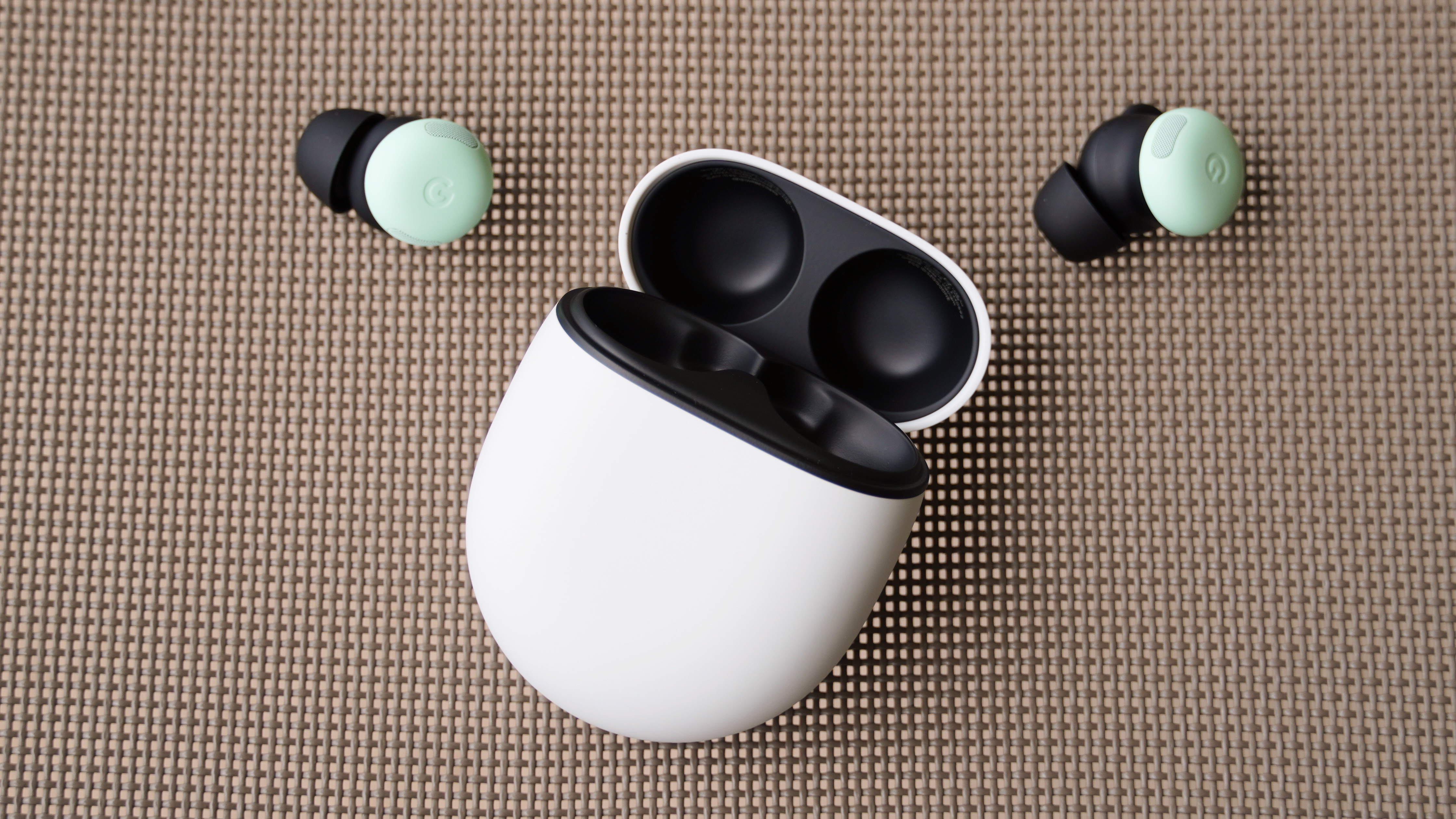
Specifications
Reasons to buy
Reasons to avoid
When we tested and reviewed the previous Pixel Buds Pro, we found that Google finally took a bigger step forward. The sequel finds ways to maintain the momentum while also shaving off 27% off the earbuds themselves. Those with smaller ears might find the Pixel Buds Pro 2 a snugger fit, given the slimmer profile. Not that they're exclusive to smaller ears, since they should be more comfortable for a variety of ear types. Black Friday deals have discounted these buds by 26% off at Amazon and Best Buy.
As with previous generations, the Pixel Buds Pro 2 are tailor-made for Android. Open the case the first time, and with one tap, your Pixel Buds will pair with most modern Android phones. Unless you're using a Pixel device, where the settings are within the phone's system settings, you can download the companion app during setup on other Android handsets to access some of the extras available. Google says it improved the ANC to block out more noise, though the bigger adjustments may be to clearer phone calls and Gemini AI integration.
Like Google Assistant, you can use the AI to help with various tasks hands-free. That also includes translation features on the fly with Google Translate when you need to bridge a language barrier. The touch controls are reliable despite the smaller point of contact to access them. Battery life also gets a boost, lasting longer per charge, and with three extra charges in the case. All in all, the Google Pixel Buds Pro 2 are a stellar pair of smart earbuds for Android users.
Best for workouts
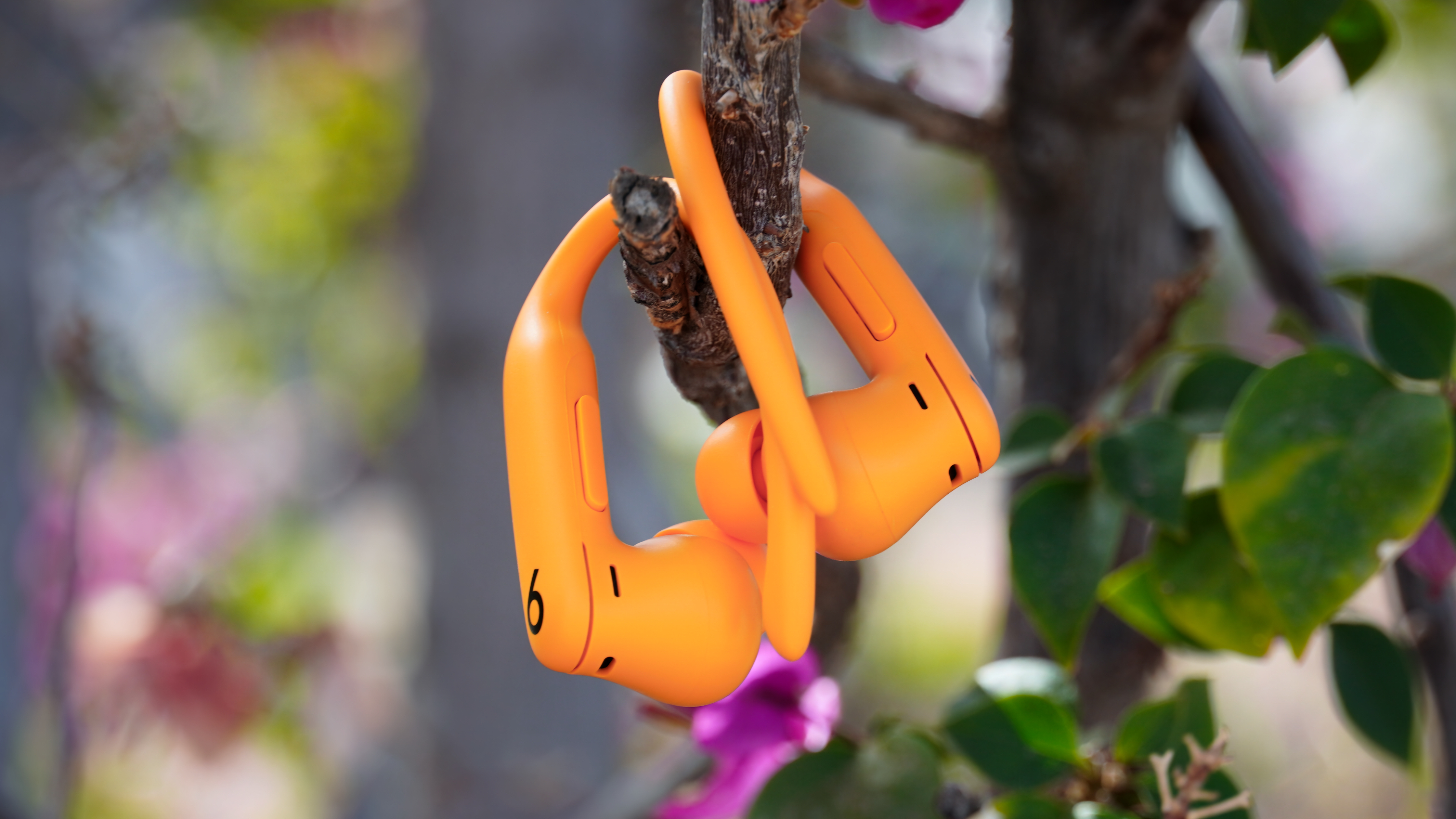
Specifications
Reasons to buy
Reasons to avoid
It took six years for Beats to come up with this sequel, but the Powerbeats Pro 2 prove their worth in our review. A built-in heart rate monitor is a key differentiator in an otherwise saturated market. Apple users will get more out of these buds, but Beats hasn't left the Android bunch behind, either.
If you buy the Beats Powerbeats Pro 2 today, you get a neat $50 off at Amazon as well as Best Buy, thanks to Black Friday.
To start, sound quality is not only better than before, adding ANC and ambient sound makes these feel light years ahead of their predecessors. Then there's spatial audio for content when you feel like it. There's nothing groundbreaking in how they perform, though a thinner profile and extra ear tips make the Powerbeats Pro 2 fit more comfortably for longer periods. The heart rate monitor works with plenty of devices and apps while you exercise, albeit not with blanket integration on all of them.
That matters at the gym or out on a run, where the ear hooks are crucial for stability. Physical buttons also help with controlling what you want.
Battery life holds up well at roughly eight hours with ANC on, depending on volume levels. The case gives you can extra three charges. It may be 33% smaller, but it's not "small," though it's nice to finally have wireless charging.
Best for hi-res
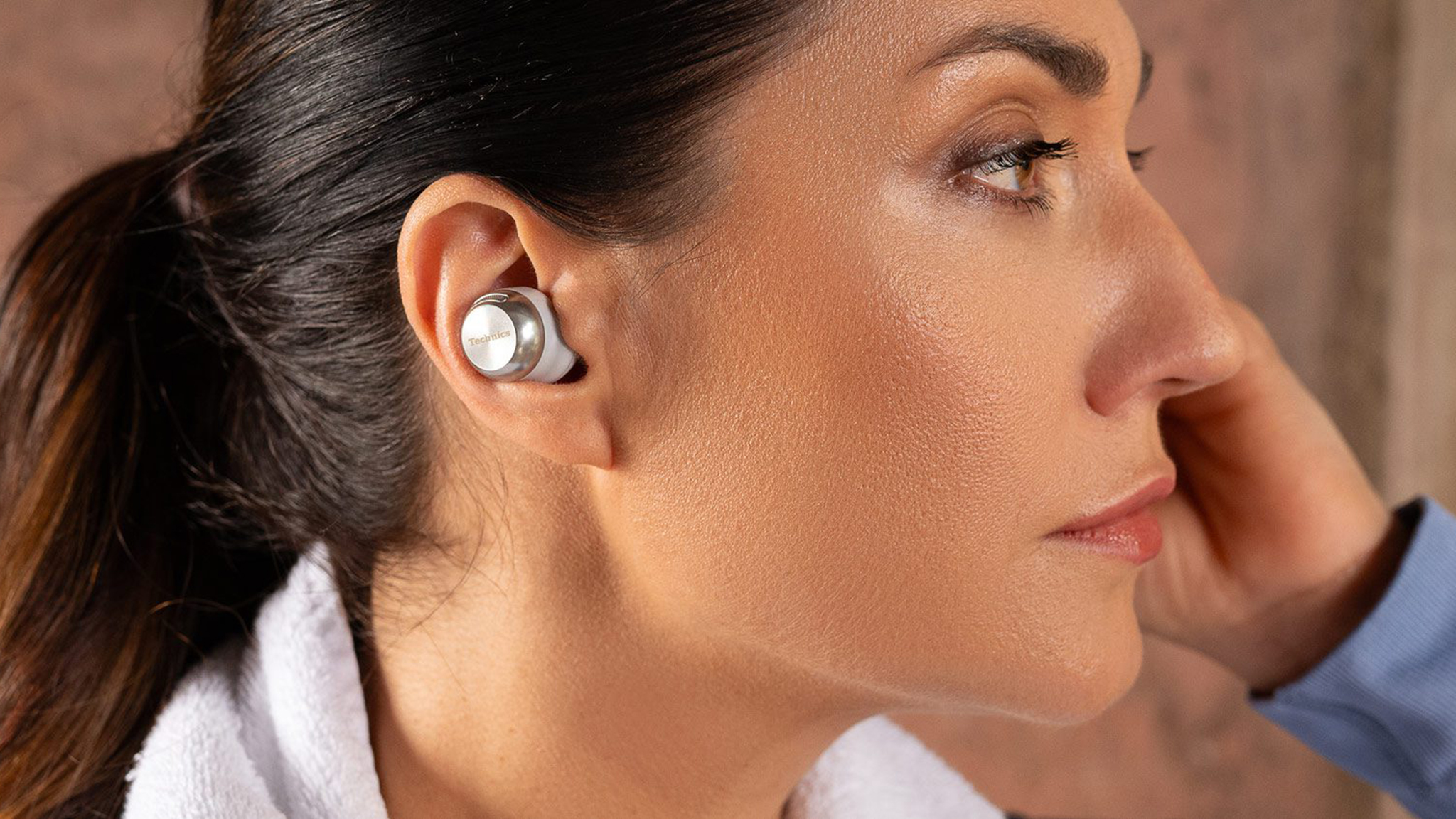
Specifications
Reasons to buy
Reasons to avoid
Technics may not be the household name it once was in a bygone era but your ears will take notice once you try these earbuds. They're an excellent pair for their audio quality alone, now enhanced further thanks to better drivers and improved ANC. Audiophiles will appreciate what these can deliver.
That includes hi-res audio by way of the LDAC codec when you listen to content from sources that help you hear the difference in your ears. Plus, the solid app support also gives you a 5-band EQ with six presets and the option to create your own. With spatial audio, you can hear the surround effect when listening to tunes in Dolby Atmos or 360 Reality Audio.
The earbuds also offer multipoint connections with three devices at the same time, though the LDAC codec can interfere with simultaneous connections. The app gives you a variety of custom choices, including which voice assistant or onboard controls you want to work.
While ANC won't be on the same level as other earbuds at the same price, the sonic balance available here is easy to like. Technics even employs a unique AI-driven voice clarity feature for phone calls. You can expect pretty good battery life at up to 10 hours per charge with ANC on or 15 hours if you leave it off, give or take how loud you go.
Currently, Amazon has knocked $77 off and Best Buy has lopped $75 off the Technics EAH-AZ100 earbuds, depending on which colorway you choose to purchase.
Best for students
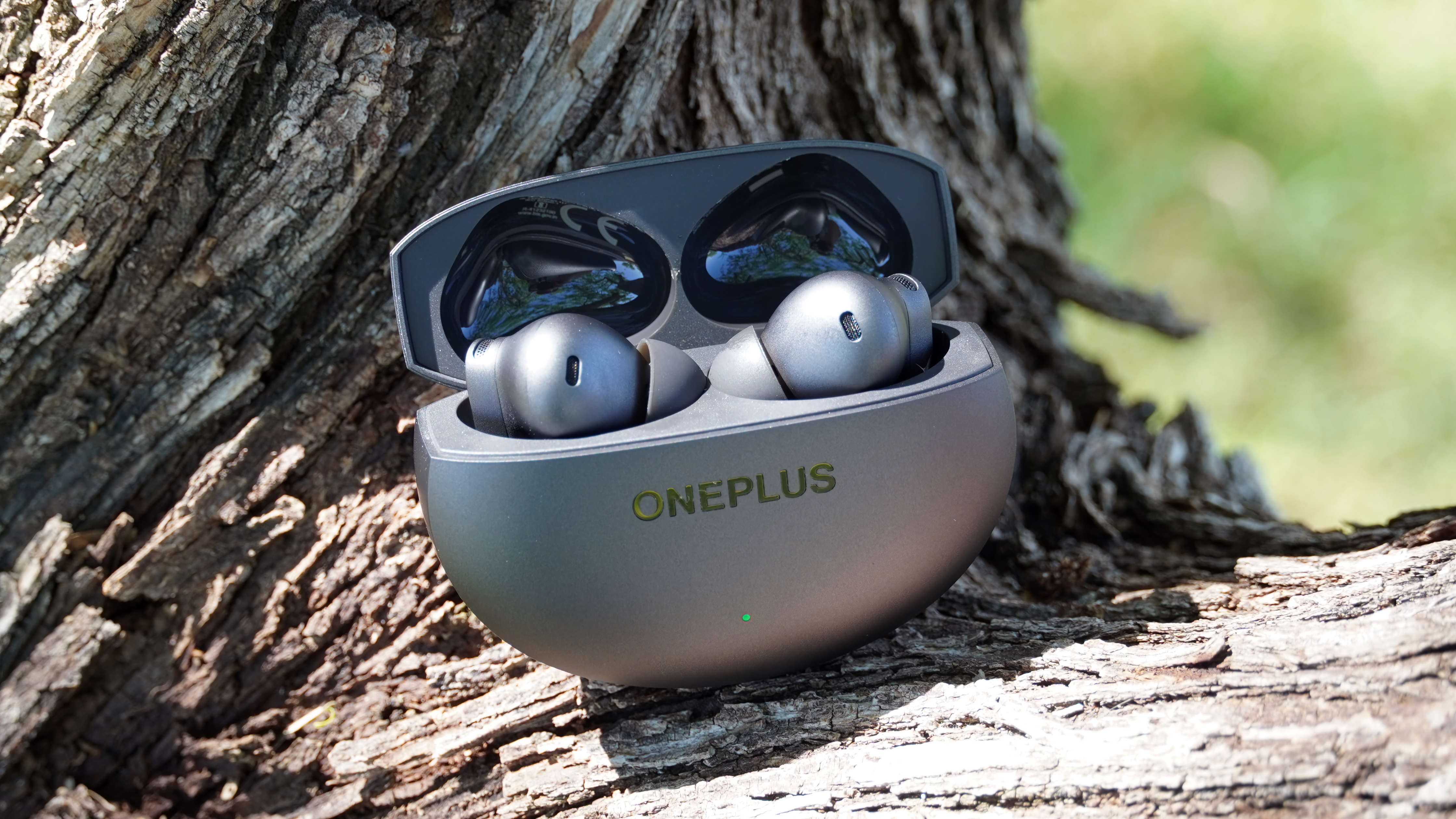
Specifications
Reasons to buy
Reasons to avoid
The OnePlus Buds 4 are one of the best-value earbuds on the market, making them an excellent choice for students on a tight budget. They work best if you have a OnePlus phone, or a device that supports the LDHC 5.0 student, but will still work great with any Bluetooth-equipped device. Routinely available for around $80 with discounts, the OnePlus Buds 4 pack similar tech to the OnePlus Buds Pro 3 while hitting a lower price point. You can also go further and save 31% at Amazon or Best Buy with the current Black Friday deals that are live.
Sound quality is excellent, thanks to the premium audio components inside the Buds 4, including an 11mm diaphragm woofer and a 6mm flat diaphragm tweeter. Additionally, separate dual DACs are being used for the woofer and tweeter in each earbud. This helps create a full and versatile sound signature that only gets better when paired with OnePlus 3D Audio and the aforementioned LHDC 5.0 support.
In our testing of the OnePlus Buds 4 compared to the Buds Pro 3, it was often tricky to tell the difference between the earbuds while listening to most tracks. While the more premium model has better ANC, the Buds 4 still held their own with solid active noise-canceling and transparency modes.
Paired with a sleek charging case offering 45 hours of total battery life, the experience is exactly what students are looking for. The OnePlus Buds 4 provide a premium experience at a midrange price point that's way more accessible to budget buyers.
FAQ
What are the best wireless earbuds?
Why you can trust Android Central
Like any pair of headphones, which earbuds or wireless headphones are fitting for you is subjective in a few key ways. They have to fit right, feel comfortable over more extended periods, and produce a pleasing sound to your ears. If audio fidelity is paramount for you, there are good options for that, just as there are options for active users or options that present great value without breaking the bank.
The best wireless earbuds strike the right notes where it counts. We're talking about excellent sound quality, excellent comfort, solid microphones, and accessibility — even better when they come at a reasonable price. It's also not just about sound; it can also be about what you don't hear, as active noise cancelation (ANC) becomes such an integral part of what makes good earbuds stand out. That's why it should come as no surprise that such a feature is so common among the best in the business.
For many, the Sony WF-1000XM5 will be the best option. They strike the right balance in the areas that really matter, like size, sound, durability, and supporting features. They're smaller than previous versions to fit comfortably in most ears and offer superb sound quality, call quality, and some of the best noise cancelation you'll ever hear.
They also provide excellent passive isolation with the proper seal to listen to everything without worrying about the background. Additional audio and control features make these very customizable on top of that.
Sony scored a real winner among the best wireless earbuds. They may not come in first place in every category, but it's hard to argue how consistently great they are to use.
How do true wireless earbuds differ from regular wireless earbuds?
In simple terms, true wireless earbuds function without cables and cords. Regular wireless earbuds are "wireless" because they don't connect to the device playing the audio but do have a cable connecting the two earbuds. In that case, the Bluetooth connection from a smartphone connects to one earbud, which then relays that connection to the other earbud through the cable.
True wireless earbuds perform the same function, albeit wirelessly. So, in effect, you have something like a daisy chain, where the phone pairs with one earbud (usually the right one) and then relays that connection to the left. Unfortunately, this method hasn't always been reliable, with audio hiccups and cuts happening. Bluetooth 5.0 has helped improve that, whereas some true wireless earbuds will connect both sides to the phone.
What are the advantages of true wireless earbuds?
The most immediate advantage is that you're not dealing with any wires. There is no chance of cables tangling or accidentally breaking. You have two separate earbuds in a case that charges them on its own. The case has a battery you can charge, meaning that you don't always have to plug it in to charge the earbuds themselves.
Some cases support wireless charging to add more convenience. Most also have USB-C ports for wired charging, some of which also include fast charging.
Despite their smaller size, true wireless earbuds are often equipped with the same wireless earbuds' features. For example, they can include onboard controls for playback or even active noise cancelation (ANC) and voice assistants. In addition, there are models with higher water and sweat resistance and those more focused on increased audio fidelity.
What are the disadvantages of true wireless earbuds?
With no cables connecting the two earbuds, there is always the risk of losing one of them. Moreover, the lack of a cable connecting the two earbuds emphasizes the connection between the two buds themselves. While this has improved, there is a chance that one side's audio may drop out — brief as it may be.
Not having cables makes true wireless earbuds easier to use on a run or during a workout. Comfort and fit are always considerations under those circumstances, but you should also be careful to use them with the right protection in place. That means at least an IPX4 rating or better if you want enough durability for workouts.
The constant charging cycles also take their toll on the lithium batteries' true wireless earbuds and their case use. Not every manufacturer approximates a shelf life, but you may find your earbuds don't last as long after two years with regular usage. Wireless earbuds aren't impervious to these issues, but since they're not cradled in a charging case, the batteries don't go through as many cycles.
Does it matter what Bluetooth version my earbuds have?
Yes, but not always for the reasons you might think. For example, Bluetooth 5.0 doesn't impact audio quality, so having that onboard doesn't mean they will sound better than a pair using version 4.2. On the other hand, updated Bluetooth protocols will impact some things, like how version 5.0 improves range and battery efficiency, for instance.
That additional range could make it easier to walk around at home while wearing your earbuds and listening to music when the phone isn't near you. Usually, major updates to the Bluetooth protocol add higher data transfer speeds, but the benefits aren't always shown with audio quality. Other times, they might.
Still, generally speaking, most of the best wireless earbuds these days have more advanced Bluetooth connectivity.
What are the best codecs for wireless earbuds?
For Android devices, Qualcomm's aptX, aptX LL, aptX Adaptive, aptX HD, and aptX Lossless codecs are generally better than SBC (subband codec), which is the standard codec all Bluetooth audio devices support. The main reason is that aptX has more bandwidth than SBC, which can positively affect audio quality. In addition, AptX Adaptive also automatically adjusts the bit rate in real time to maintain smooth playback and reduce connection drops.
AAC (Advanced Audio Codec) is also standard and is YouTube's preferred codec. While iPhone users benefit from it, it hasn't been as efficient on Android phones. Samsung has its proprietary codec, which it calls Scalable, first introduced in the Galaxy Buds. Its purpose is to be adaptive, so the bit rate and connection don't impact what you listen to. It's exclusive to Samsung's earbuds, so it's not adopted by other brands the way Sony's LDAC is. It also has a variable bit rate, though it's not widely adopted yet.
What are the best wireless earbuds for Android?
By and large, any pair of wireless earbuds will work with Android phones and tablets. Sometimes, you may lose certain features or functionality based on what a brand sets aside for its own ecosystem. That's why Apple's AirPods will pair faster and more seamlessly with iOS devices than they would with Android. It's also why Samsung earbuds may have certain exclusive features that only work with its own products.
Apple doesn't support Qualcomm's aptX codec, whereas Android devices generally do. The flexibility of that codec helps some earbuds do more with Android than they might on iOS. One example of that would be how aptX Adaptive includes the low latency mode, which is beneficial for syncing audio with video while playing games or watching a show or movie.
Even if a pair of wireless earbuds don't support aptX, it doesn't negate their abilities or performance. It matters how the earbuds were tuned to begin with, and it's always a bonus when they have an app they can connect with to let you adjust sound and controls.
What are the best earphones for music?
If you're a big music listener, the best earphones for music continue to be the Sony WF-1000XM5. This is because not only do they have a great design and solid audio, but the earbuds also have long battery life and support hi-res Bluetooth codecs such as LDAC.
What are the best canal earphones?
If you're looking for the best canal earphones, there are several options that are worth considering. The Sony WF-1000XM5 are the best overall pick, but the Bowers & Wilkins Pi8, EarFun Air Pro 4, Bose QuietComfort Ultra Earbuds, and Samsung Galaxy Buds 3 Pro are also great options that come in a variety of price points.
What are the best compact earphones?
The Google Pixel Buds Pro 2 are excellent options for the best compact earphones. They measure 25.0 x 49.9 x 63.3mm, and when in your ear, they don't stick out too much like other earbuds, like those with stems. However, they're still large enough to use the controls or remove them easily from your ear.
What are the best waterproof earbuds?
The Galaxy Buds 3 Pro are the best waterproof earbuds. While they're not waterproof, they are water resistant, and feature an IP57 water and dust resistance rating. This is a higher rating than most earbuds we've tested and means they can be submerged for up to 30 minutes at a depth of up to one meter.
How to choose
Finding the right wireless earbuds isn't always about branding or a flashy appearance, it has more to do with how comfortable they fit, how they sound, and how much control you have over what they can do.
For starters, as an Android user, you don't really have to worry much about compatibility. With rare exceptions — like certain AirPods features designed for iOS users — earbuds will work with any Android phone or tablet. There may be particular instances where branding sets some exclusivity, as in how Samsung earbuds integrate with Samsung devices in ways they don't with those from other brands. That kind of integration might be appealing to you if you want it.
How well they'll fit your ears is another thing, though it's usually best to choose a pair of earbuds that come with different ear tip sizes. Some brands offer ear tip tests in their dedicated apps to determine the best fit. You'd be surprised at how one size might be different in one ear compared to the other.
A comfy fit with a tighter seal all but ensures better audio performance, whatever it may be from the pair you're wearing. The passive isolation also helps active noise cancelation do a better job blocking out the background and letting the audio or phone calls sound clearer.
If you hate having to charge your earbuds too often, pay attention to battery life ratings and bear in mind those figures are always based on what the default volume is out of the box. Raise it and the number goes down. Noise cancelation also plays a key role in battery life levels, though it's become standard for manufacturers to clarify expected battery performance based on whether you have it on or not.
AirPods may have notoriety and visibility but they are far from the best in class, which is what makes this list a good place to start. These earbuds are better suited to all users and offer more granular control over the fit and sound you're looking for when listening to your favorite tunes.
How we test
☑️ One of the oldest and most trusted Android sites on the web
☑️ Over 15 years of product testing
☑️ Thousands of products reviewed and tested since 2007
☑️ Over 30 wireless earbuds tested every year by our audio team
Testing wireless earbuds is a process based on a number of factors. You will see many of those considerations come up in content covering wireless earbuds at Android Central. While we don't run benchmarks or produce graphs to dive into the exact frequencies, we ascertain performance from the experiential side to better explain what you can expect while using them.
After all, earbuds are arguably even more personal than headphones are because how well they fit plays a big role in the overall experience. That requires trying different ear tips or attachments (if they have them) and wearing them for longer periods to gauge what works well. We do our best to account for variances in all aspects, and a lot of that starts with how comfortable they are to wear.
A proper fit helps us understand what audio playback sounds like. And if they don't fit right, we'll always make that clear to you. Just like we go into detail over how they sound — and if available — how you can adjust and tune them more to your liking through companion apps.
That's why it's equally important to thoroughly test all features, like comfort, sound quality, active noise cancelation (ANC), transparency, and phone integration (i.e. calls, voice assistants). How do these features do under different conditions and scenarios? Does the ANC work well in noisier places? Can you count on good sound listening to music and during phone calls? Do manufacturers' battery life claims hold up? Are they rugged enough for workouts?
We try to use wireless earbuds like you would, while also trying to find the nuances, whatever they may be. If they support features like hi-res or spatial audio, we go into that as well. If there's anything special about them, we make sure you know about it.
More reviews for wireless earbuds
Find more wireless earbuds here
More about wireless earbuds
- Should you buy wireless headphones or earbuds?
- Spotify Lossless: What you need to take full advantage of this long-awaited feature
- Can Auracast help me?
- Bluetooth audio terms and codecs explained: aptX, LDAC, LC3, and everything else
- How to stream hi-res music from your phone
Get the latest news from Android Central, your trusted companion in the world of Android

Ted Kritsonis loves taking photos when the opportunity arises, be it on a camera or smartphone. Beyond sports and world history, you can find him tinkering with gadgets or enjoying a cigar. Often times, that will be with a pair of headphones or earbuds playing tunes. When he's not testing something, he's working on the next episode of his podcast, Tednologic.
- Brady SnyderContributor
- Patrick FarmereCommerce Editor
- Namerah Saud FatmiSenior Editor — Accessories
